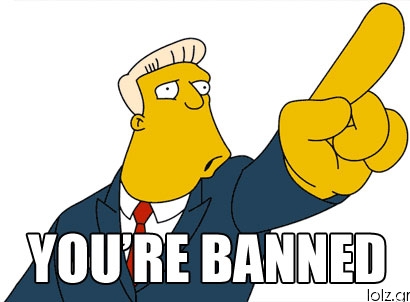Michael Kreitzer Wants Plaintiffs To Be Diligent.

Every so often I guess I have to write something about, you know, the law or the legal profession or something boring like the rules that actually govern what we do. I know I know -- snooze city. But it's the only way dear readers in big firms can justify their 4.6 hours of daily billing on "professional matters" or "legal development" or "wasting most of the day acting like you are working on something important at your computer."
So here's a news flash on a burning issue that has consumed our profession since those randy barons tried to serve the Magna Carta Libertatum on King John, yes, it's the dreaded Last Served Defendant Rule:
Now I know what you're thinking. It's probably the same thing I first thought when I heard about this dramatic 11th Circuit development:Weighing in on a long-standing circuit split over when the time for removal runs in a multidefendant suit, the Eleventh Circuit in Bailey v. Janssen Pharmaceutica, Inc. [PDF] has adopted the so-called last-served defendant rule, suggesting that the U.S. Supreme Court’s decision in Murphy Bros., Inc. v. Michetti Pipe Stringing, Inc. supports that rule.
In Bailey, the plaintiff served the last of four defendants over 30 days after service on the other three defendants. The last-served defendant filed a notice of removal 30 days from the date it was served. Both the district court and the Eleventh Circuit held that the notice of removal was timely because it was filed 30 days after last defendant was served.
This holding is at odds with the Fifth Circuit’s decision in Brown v. Demco, Inc. There, the Fifth Circuit held that the time for removal expires 30 days after the first defendant is served, regardless of whether other defendants have been served. The Fifth Circuit reasoned that the first-served defendant rule was appropriate because removal requires the unanimous consent of all defendants. Once the first-served defendant decides against removal, removal is impossible.
The Fifth Circuit is in the minority on this issue. The Bailey case follows more recent decisions in the Sixth and Eighth Circuits (Brierly v. Alusuisse Flexible Packaging, Inc. and Marano Enterprises of Kansas v. Z-Teca Restaurants, LP [PDF]), which conclude that equity requires that each defendant have 30 days from the date it was served to file a notice of removal. Otherwise, later-served defendants could lose their statutory right to removal before ever receiving process.
The Eleventh Circuit based its Bailey decision in part on its view that the last-served defendant rule is supported by the U.S. Supreme Court’s decision in Murphy Bros., Inc. v. Michetti Pipe Stringing, Inc. In Murphy Brothers, the Court held that the removal period does not begin until the defendant receives formal process. The Eleventh Circuit reasoned that the Fifth Circuit’s first-served defendant rule is inconsistent with the Murphy Brothers holding because it obligates a defendant to seek removal prior to receiving formal process.
What is Michael Kreitzer's reaction? For gosh sakes get me handsome Mike Kreitzer on the horn and tell me what he thinks of all this! Seriously, I need to know what Michael thinks NOW!Thankfully, Michael was indeed available for comment:
“A plaintiff who cries foul because its case, which had been litigated in state court for some time, is surprisingly removed to federal court by a later-served defendant may only have itself to blame,” states Michael Kreitzer, Miami, cochair of the Federal Rules Revision Subcommittee of the Section’s Pretrial Practice and Discovery Committee. “The plaintiff is the master of choosing the defendants and the order in which they are served, and if the plaintiff is diligent in identifying potential defendants presuit, then the plaintiff likely would not face the late arrival of a defendant with removal rights.”Sounds reasonable and all Michael, but that's a low blow -- everyone knows plaintiffs don't think that far ahead.


Yorumlar
Yorum Gönder